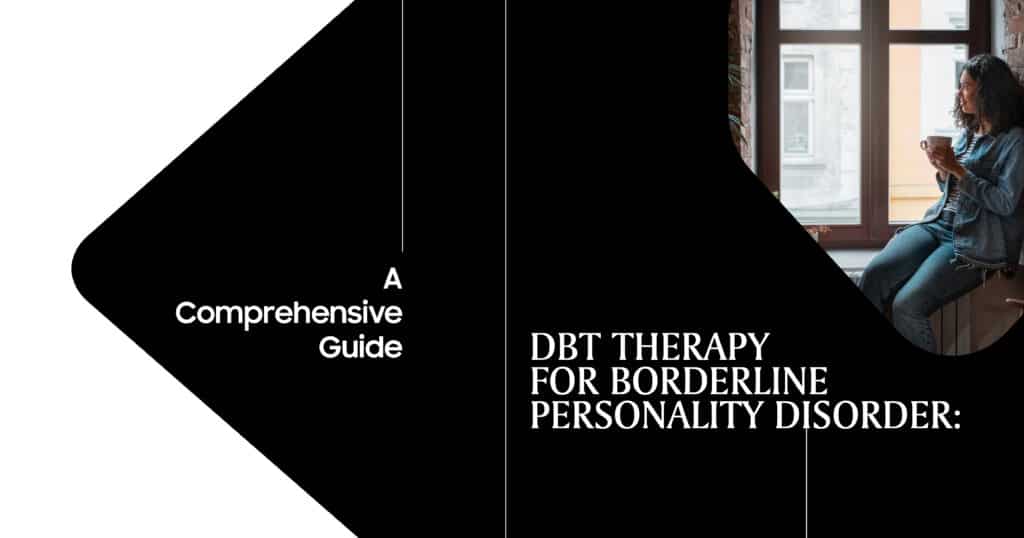Introduction
Borderline Personality Disorder (BPD) is a complex and often misunderstood mental health condition characterized by intense emotions, unstable relationships, and impulsive behaviors. Enter Dialectical Behavior Therapy (DBT), a treatment specifically designed to help those with BPD navigate their emotional turmoil and build a life worth living. Let’s explore DBT Therapy for Borderline Personality Disorder: A Comprehensive Guide and see how this approach can make a real difference.
What is DBT Therapy?
Origins and Development
Developed in the late 1980s by psychologist Marsha Linehan, DBT was initially created to treat chronically suicidal individuals. Over time, it has proven to be highly effective for those with BPD. DBT blends cognitive-behavioral techniques with mindfulness practices, offering a balanced approach to emotional regulation and interpersonal effectiveness.
Core Components of DBT
DBT is structured around four main components:
1. Individual Therapy: One-on-one sessions to address personal challenges and apply DBT skills.
2. Group Skills Training: Weekly sessions to learn and practice DBT skills.
3. Phone Coaching: Support between sessions to apply skills in real-life situations.
4. Therapist Consultation Team: Therapists meet regularly to stay motivated and provide the best care.
The Four Modules of DBT
Mindfulness
Mindfulness forms the foundation of DBT, guiding individuals to focus on the present moment and observe their thoughts and feelings without judgment. This module includes:
– Observing: Noticing what’s happening inside and outside without trying to change it.
– Describing: Putting words to experiences to understand them better.
– Participating: Engaging fully in the present activity with awareness.
Interpersonal Effectiveness
This module helps individuals navigate relationships more effectively, teaching skills such as:
– DEAR MAN: A strategy for assertive communication, standing for Describe, Express, Assert, Reinforce, Mindful, Appear confident, and Negotiate.
– GIVE: Focusing on maintaining relationships, standing for Gentle, Interested, Validate, and Easy manner.
– FAST: Maintaining self-respect, standing for fairness, Apologizing, sticking to values, and being truthful.
Emotion Regulation
Emotion regulation skills help individuals understand and manage intense emotions. Techniques include:
– Identifying Emotions: Recognizing and naming emotions to gain control.
– Reducing Vulnerability: Practicing behaviors that improve emotional resilience, such as sleep, nutrition, and exercise.
– Opposite Action: Acting opposite to emotional urges to change emotional responses.
Distress Tolerance
This module focuses on surviving crises without making things worse. Key strategies include:
– TIP Skills: Techniques to change body chemistry quickly, including Temperature, Intense exercise, Pace breathing, and Progressive muscle relaxation.
– Self-Soothing: Using the five senses to calm oneself.
– Distraction: Temporarily diverting attention from distressing situations.
How DBT Transforms Lives
Real-Life Applications
DBT train individuals with practical skills to manage their everyday lives. Whether it’s calming down after an argument, resisting the urge to self-harm, or improving communication with loved ones, DBT offers tools that can be applied in various scenarios.
Success Stories
Many individuals with BPD have found significant relief through DBT. Stories of transformed lives, improved relationships, and reduced hospitalizations highlight the therapy’s impact. While results can vary, the consistent theme is that DBT provides hope and a structured path toward stability.
FAQs
How long does DBT therapy take?
DBT therapy typically lasts about six months to a year, depending on individual needs and progress. Some individuals may benefit from longer-term treatment.
Is DBT effective for conditions other than BPD?
Yes, DBT has been adapted to treat other conditions, including eating disorders, depression, anxiety, and PTSD. Its skills are broadly applicable to various emotional and behavioral challenges.
Can I practice DBT skills on my own?
While working on it with a trained therapist is beneficial, many DBT skills can be practiced independently. Numerous workbooks and online resources can help you get started.
What if I can’t afford DBT therapy?
Many communities offer low-cost or sliding-scale DBT programs. Additionally, some therapists provide phone coaching or online sessions, which can be more affordable.
How do I find a qualified DBT therapist?
Seek out therapists who have received specialized training in DBT. You can check professional directories, ask healthcare providers for referrals, or contact local mental health clinics.
The Importance of Support Systems
Family and Friends
A supportive network can make a great difference in the success of DBT. Educating family and friends about BPD and DBT can foster understanding and patience.
Peer Support Groups
Connecting with others who are going through similar experiences can provide validation and encouragement. Many communities and online platforms offer DBT-focused support groups.
Conclusion
Dialectical Behavior Therapy for Borderline Personality Disorder is more than just a treatment; it serves as a lifeline for many. By focusing on mindfulness, interpersonal effectiveness, emotion regulation, and distress tolerance, DBT provides a comprehensive toolkit for managing the challenges of BPD. If you or someone you know is struggling with BPD, exploring DBT could be a transformative step toward a healthier, more stable life.





